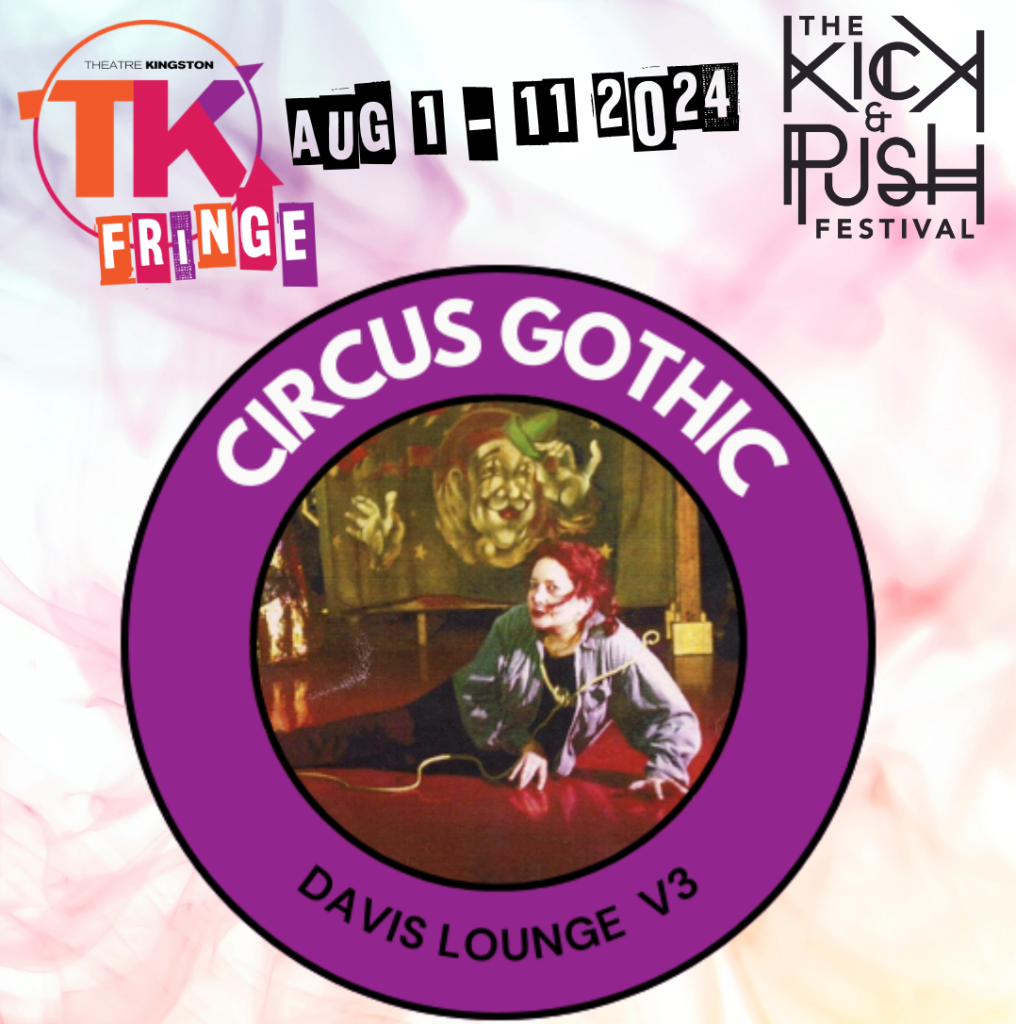The Circus is Scarier than Clowns: ‘Circus Gothic’ Takes Apart the Big Top

With 23 characters, including two animals, Circus Gothic is a unique one-woman show. Jan Kudelka plays all the roles in a truly incredible performance, as might be expected given that she’s had fifty years (yes, fifty) of performing this particular show in order to perfect it. This fact alone makes it worth seeing and informs a really powerful performance.
The story is a memoir of Kudelka’s experience joining the circus as part of a troupe of 28 student clowns in 1974. Notably, the students (studying under Richard Pochinko) think of themselves as part of the heritage of European clowning—they look up to Charlie Chaplin, Buster Keaton, Grimaldi—but the circus only values American clowning, as that’s what sells. Kudelka and the others are from a school where every clown needs six masks—six distinct characters that intertwine into a whole identity, their characterization as a clown.
From the beginning when Kudelka introduces her six masks, there is a raw physicality to the role—she rubs her face to shape it into each mask (which is a persona rather than a physical prop), forming a new character each time, then mimes plucking the mask and its character away. This rawness is characteristic of the show, giving it a kind of grubby realism that is particularly distinctive, making the trauma that Kudelka describes all the more disturbing. The difficulties and “gothic” elements of the circus have a visceral, embodied physicality, and the grotesque focus on the heat and exhaustion and trauma is reminiscent of a grimy horror movie even though it is a memoir and not a horror play. Kudelka portrays the behind-the-scenes view of the circus that isn’t the family-friendly, light-hearted affair one might imagine.
The trauma of the animals’ experience is especially heartbreaking, given that Kuldeka acts them out with all the seriousness of a Shakespearean actor, and the poor conditions they found themselves in was hard to witness even as it was told as a story. The embodiment of Ellie the elephant is profound and compelling (although it involves a little bit of an African-American accent that isn’t especially necessary or ideal), while the characterization of a circus cat is a little more sinister (the cat is portrayed as an evil character rather than a victim of circumstance).
The set is sparse yet colourful, given that it mainly consists of a large clothing rack filled with different costume pieces that Kudelka uses to portray each character—a cowboy hat for one, a silk scarf for another; a yellow bandana with a glittering cape here, a baseball cap there. Beyond this functional decoration, Kudelka makes use of a low coffee table and a chair. Despite this bare set, there is constant movement in the performance.
Kudelka’s speech (and not infrequent song) is quite frantic more often than not, creating an intense whirlwind like the twister that takes off the big top of the tent. At other times, it is deliberately slow for emphasis. The result is a very powerful performance that often felt uncomfortable, mirroring the discomfort that the characters frequently find themselves in. The circus experiences various disasters, often weather- and technology-related, but sometimes interpersonal, and the characters respond to them in a variety of ways.
The narrative loosely follows Kudelka becoming a clown with the troupe, the troupe travelling to the east coast and getting involved with the circus, and then learning about different people involved there—their various characterizations and daily habits—before culminating in the circus ending up at a particular town (one of many) and the animosity felt there (not unusual).
The play felt like witnessing an often uncomfortable and sometimes disturbing experience, but one that is profound and deep. The ending is unsettling and morose—not necessarily emotions that one associates with clowning, but perhaps with the circus itself. Kudelka offers a powerful memoir and pokes holes in the big top even as it looms large in the story.
‘Circus Gothic’ is playing at the Grand Theatre in TK Fringe as part of the 2024 Kick & Push Festival until August 11th, 2024. For more information and tickets, click here.
